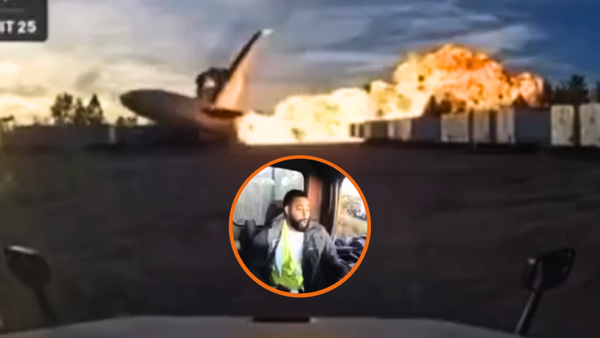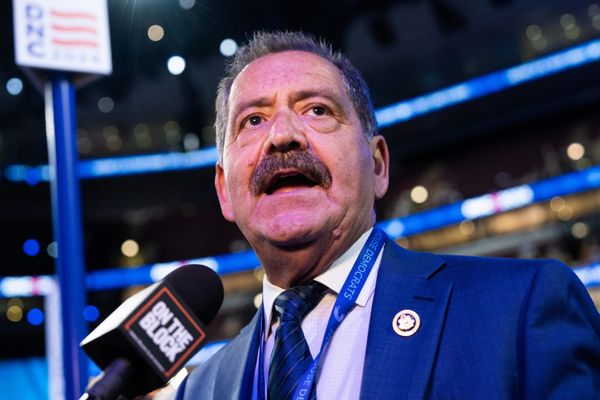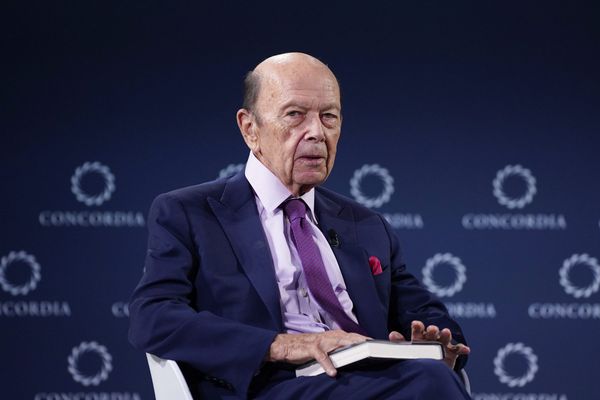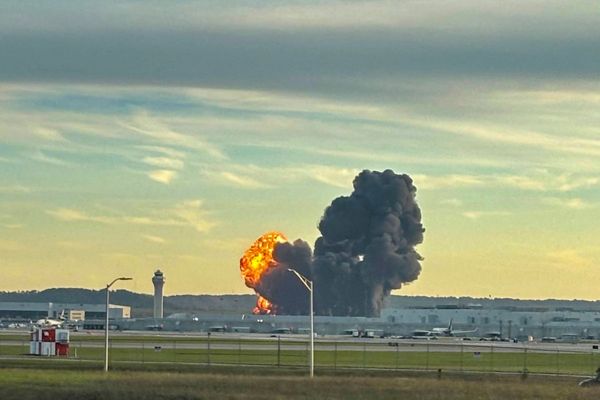
Ben McLane has grown accustomed to spending summers under ashen skies. As a fire captain for the US Forest Service (USFS), he’ll spend days on the fire line, engaged in harrowing battles to contain infernos as they devour trees across the Pacific north-west.
But even in these harsh conditions, the stresses from home frequently creep into his mind. McLane, and other federal firefighters like him, are struggling to make ends meet as they battle the country’s biggest blazes.
“I would like to buy a house, I would like to start a family, and I would like to be home for some of those things,” he said, adding that he and his wife had had to make hard decisions because of his career. “The demands are too high – we can’t afford to have children.”
Federal firefighters have long faced the twin stressors of low pay – starting at just $15 an hour for entry-level positions – and a high-pressure environment that takes a heavy mental toll and keeps them away from their families, with little downtime between assignments. The issues have pushed scores to leave the service, taking valuable experience and knowledge with them.
This fall, those issues are coming to a head. A temporary but vital firefighter pay bump, implemented as part of Joe Biden’s 2021 infrastructure bill, will expire at the end of September. Without it, firefighters say the US risks exacerbating a crisis of burnout and retention at a time when fires are becoming bigger, more dangerous and harder to control.
Officials have just weeks to implement a long-term fix. If they fail, federal land management agencies may be left to navigate another mass exodus from the essential workforce just as autumn winds increase risks in the fire-prone west.

“Gritty people make great firefighters and these gritty people have this value of service ingrained in them – but the fatigue is real,” said McLane. While stress is an inevitable part of the work, he and others argue that better pay would go a long way toward helping people stay in the job and feel valued.
“Firefighters don’t want accolades, they don’t need to be called heroes,” says Riva Duncan, a retired USFS fire officer and vice-president of the Grassroots Wildland Firefighters advocacy group. “But they want to at least be treated like they are appreciated for the risks they take and the sacrifices they make.”
Pay bump to expire – unless Congress acts
Biden’s temporary pay bump – which added the lesser of $20,000 or a 50% increase to firefighter paychecks – was intended as a salve that would buy Congress time to pass a permanent solution to the problems that have left federal firefighters underpaid and overworked for years.
“It was a big momentous thing for the pay bump to happen, and I think the majority of fire folks had no idea that there was a sunset clause,” said Bré Orcasitas, a former federal wildland firefighter who left the service to focus on advocacy. “We are already losing people at an exponential rate – and it will be a slap in the face if they can’t get it together in time.”
Pressure is on legislators to pass a bill that would codify and secure pay increases before the new fiscal year begins in October. It has bipartisan support, and it’s expected to be voted on this week.
But even if the so-called Wildland Firefighter Paycheck Protection Act passes, it won’t be a cure-all. While it raises base salaries, it may force firefighters to add more to their heavy workloads to make up the difference. Some may still end up worse off than they were with the bonus.
“There are a lot of good things about it but it is going to mean less money in people’s pockets,” Duncan said of the legislation.
Low pay is among the biggest barriers to recruiting and retaining the workforce, according to a 2022 Government Accountability Office report, which concluded that compensation “does not reflect the risk or physical demands of the work” even though positive steps have been taken. The analysis also found that the 18,700 federal firefighters and staff made wages that often trail behind those made in food service or other less dangerous jobs.
A separate study, from the University of Washington and the USFS Rocky Mountain Research Station, found that federal firefighters earn 40% less than state firefighters in four western states, despite spending more time on the job. There have long been reports of firefighters turning to crowdfunding websites to afford necessary care after injuries or illnesses caused by the job, struggling to afford housing, and navigating the significant hardships undertaken by their families, who spend months of the year without them.
The tension often falls on families when money is tight.
For Janelle Valentine, it’s always been difficult to go long stretches as a single parent when her husband is on the fire line. “I don’t think people understand the sacrifice at home,” she said. But the pay bonus eased the blow, helping ensure their growing family could stay financially afloat, adding roughly $1,500 a month – just enough to cover their mortgage.
“With the pay increase we finally felt like we could breathe and get caught up on bills,” she said, recounting how, before the bonus, they had to rely on credit cards through the off season when her husband had less work.

Valentine and her husband have dedicated their lives to his job over the past decade, moving their small family to a tiny rural town near where he could find work. Now, she said, they are being forced to reconsider their future. Without the supplemental funding they won’t be able to support themselves and he will have to join the others who have left the ranks in search of better opportunities.
“It feels like 10 years wasted,” she said. Even if he stays for a time, she is worried about what a loss in income will do to crews overall.
“They won’t have enough people on the line,” she said. “What makes me feel safe about my partner going out on these fires is I trust his crew members – I trust that he has other people looking out for him and I trust those people. If they aren’t there it becomes a much scarier situation.”
Understaffing creates feedback loop
Staffing issues have long posed problems, especially as flames grew fiercer. That’s led to a devastating feedback loop – putting more pressure on those who stay and pushing rates of departure higher – but it’s also meant a loss in leadership and training that can’t be quickly or easily replaced.
Brian Rhodes, an official with the USFS who oversees the fire and aviation program in California, acknowledged the problem. “It’s the experience walking out the door,” he said, “that we know is going to take the agency years and years to make up for.”
The USFS has become more transparent about the issue, highlighting stories on its website about firefighters with financial difficulties and calling on Congress to pass a solution. In July, after announcing that the agency had achieved 99% of its onboarding goal with 11,187 firefighters signed on nationwide, officials noted the number still “isn’t enough capacity to meet the needs of the ongoing wildfire crisis”.
As wildfire intensity increases and threats stretch across more months, the agency has also had to shift its approach to hiring, switching from a majority seasonal workforce to one where the need for firefighters remains through the year.
But as one of the biggest employers of firefighters, the USFS has also faced criticism in recent years for painting a rosier picture of recruitment while struggling to staff high-risk areas – especially in California. Some crews and forests only have roughly half the staff they need, according to the USFS chief, Randy Moore, who said in a 2022 Senate hearing that a lot of job offers are being made but “there’s a lot of declinations in those offers”.
One firefighter, who asked to remain anonymous out of fear of retribution for talking to the press, said when numbers are low, specialty teams are cobbled together to fill significant gaps.
“We lose trust in our leadership when they say we are 90% staffed – because we are fucking not,” the firefighter said.
When teams are understaffed, he added, it drives up the difficulty of the work and adds new dangers for both crews and the communities they are trying to protect.

“These big consequential fires, when they happen, are going to be labeled as a natural disaster, or climate change, or a lack of forest management, depending on what side of the aisle you are on,” he said. “It’s not going to be that we couldn’t hire enough people and that Congress didn’t pass enough legislation – but that’s what those of us doing the job are seeing.”
A crisis for firefighters is ultimately a crisis for wildfire-prone communities, and advocates are sounding the alarm about the workforce that has silently made sacrifices for the greater good. The bill, they say, is just a first step in ensuring that crews get the support they need – particularly when it comes to protecting their mental and physical health. Along with the life-threatening and health-harming nature of the job, firefighters are experiencing increasing rates of depression, PTSD, alcohol and drug abuse, and death by suicide.
With all eyes on the October funding deadline, advocates are using this moment to drum up support for a more comprehensive support package that Congress is also considering. Along with establishing better pay rates, Tim’s Act – named for Tim Hart, a smoke jumper who died from injuries sustained while parachuting into a fire in 2021 – would include benefits such as paid rest periods, physical and mental health support, and housing stipends for personnel deployed far from home.
But that bill, which was reintroduced this year after it failed to get traction in 2021, is further from reaching the president’s desk than its pay-focused counterpart.
For firefighters like Ben McLane, boosting salaries will be crucial to prevent a mass exodus. But providing better programs, benefits and support for this difficult work is the key to making the profession sustainable.
“The pay disparity issue is the tourniquet – it is the first step,” McLane said. “But you don’t stop treating the patient once the tourniquet is applied.”







